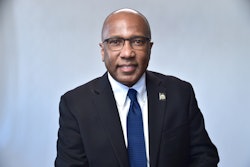The headlines are emblazoned with the gloomy tales of America’s academic decline as drop-out rates skyrocket and adult educational attainment sags behind international competitors, but one educational statistician, in a newly released report, said it’s nothing more than propaganda.
“They quote this stuff because people like to be told how bad they are. We get hung up on how bad we are doing,” said Dr. Cliff Adelman, senior associate at the Institute for Higher Education Policy and a former researcher at the U.S. Department of Education. “I’m not out to tell you how good you are, but to provide an honest picture as opposed to a purposely dishonest picture.”
For the past couple of years, international education agencies have monitored the degree-completion numbers as nations like Canada, Korea and Japan caught up with the United States. In all those countries, the proportion of the population earning bachelor’s degrees or their equivalent increased while the U.S. seemed to drop in the rankings.
But inconsistencies in the reporting systems from country to country raised suspicions from Adelman and others who questioned the value of comparative higher education data in his report titled “The Spaces Between Numbers: Getting International Data on Higher Education Straight.”
In the report, Adelman criticizes international data collectors, such as the Organization for Economic Cooperation and Development (OECD); the United Nations Educational, Scientific and Cultural Organization (UNESCO); World Bank; and Eurostat, the central statistics agency for the 27 countries of the European Union.
Different countries classify completion and degrees differently, causing the OECD and others to try to standardize the data but “with dubious results.”
“The challenge is going country to country to delve into details to understand these numbers,” said Dr. Jacqueline King, assistant vice president of the Center for Policy Analysis at the American Council on Education. “By portraying the information in nice neat tables, OECD can give the reader the impression of more comparability and more precision than actually exists.”
In its annual collection of statistics “Education at a Glance,” OECD ranks educational attainment using data from 30 post-industrial countries. “There are 24 OECD countries compared in this table, where the U.S. graduation rate is indicated at 56 percent within six years of entry to higher education, the second lowest among the 24 countries,” Adelman’s report notes.
OECD fails to acknowledge the impact of population shifts. The U.S. overall is producing more degrees each year, but degree attainment, as a percentage of the population, is flat because of a population boom in recent years, led by Latinos and immigrants.
Countries that produce more degrees but experience a decline in population can claim to have a higher percentage of educated residents.
“We are producing more degrees than ever before among minorities and in general but the problem is the underlying population is growing faster or at least as fast,” King said. “The problem is we haven’t been able to get ahead of our progress.”
A better measure, in terms of informing policy, involves a query into the quality of degrees Americans are earning, the level of inclusion and success of under-represented groups in higher education, and the flexibility of the system to support different types of students, Adelman said.
An associate degree in the United States is not the same as in other nations like Canada. In the OECD report, for example, Canada registered an increase in degree production at the associate’s level, elevating its position on the table. But Canadians count short-term certificates in the same category of the two-year degree while the U.S. doesn’t. Nevertheless, Canada was at the top of associate degree-producing countries in the world.
“Canadians will tell you it’s a bit inflated,” said King of ACE, whose office has researched the story behind the numbers of OECD’s top-ranked countries for educational attainment. “In Canada if you went to a one-week Microsoft software training class and received a certificate, you might count that. Our guesstimate is that the Canadian rate is probably inflated by 5 or 6 percent.”
Adelman credits OCED for its “valiant attempts” to create an international standard and for collecting the information, but he said, “accurate measures depend on each countries’ ministry observing the rules,” something that hasn’t happened.
The negative reports about U.S. higher education has influenced domestic goals and pushed the need for education reform.
President Barack Obama’s goal of “having the highest proportion of college graduates in the world” by 2020, still stands and looking at international rankings may humble the U.S. enough to examine and imitate best practices around the globe, King said.
The United States has been traditionally too “self-reverential” when it comes to evaluating the quality of domestic policies, she said.
“This is an opportunity to look outside our borders for other models and better ways of doing things,” she said. “I think people can use OECD as a point of departure to look deeper into countries and get into a rich level of details one country at a time.”
Adelman said the U.S. can learn much from Europe and Asia but will do well to measure its own performance by comparing one generation against the next.
“Anyone can put numbers on a board,” he said. “You don’t pay attention to sports rankings, you pay attention to what’s going on for you.”





















